- TOP
- How to Hold a Juzu
The way to hold Juzu
The way to hold Juzu and the sects that highlight the charm of Juzu.
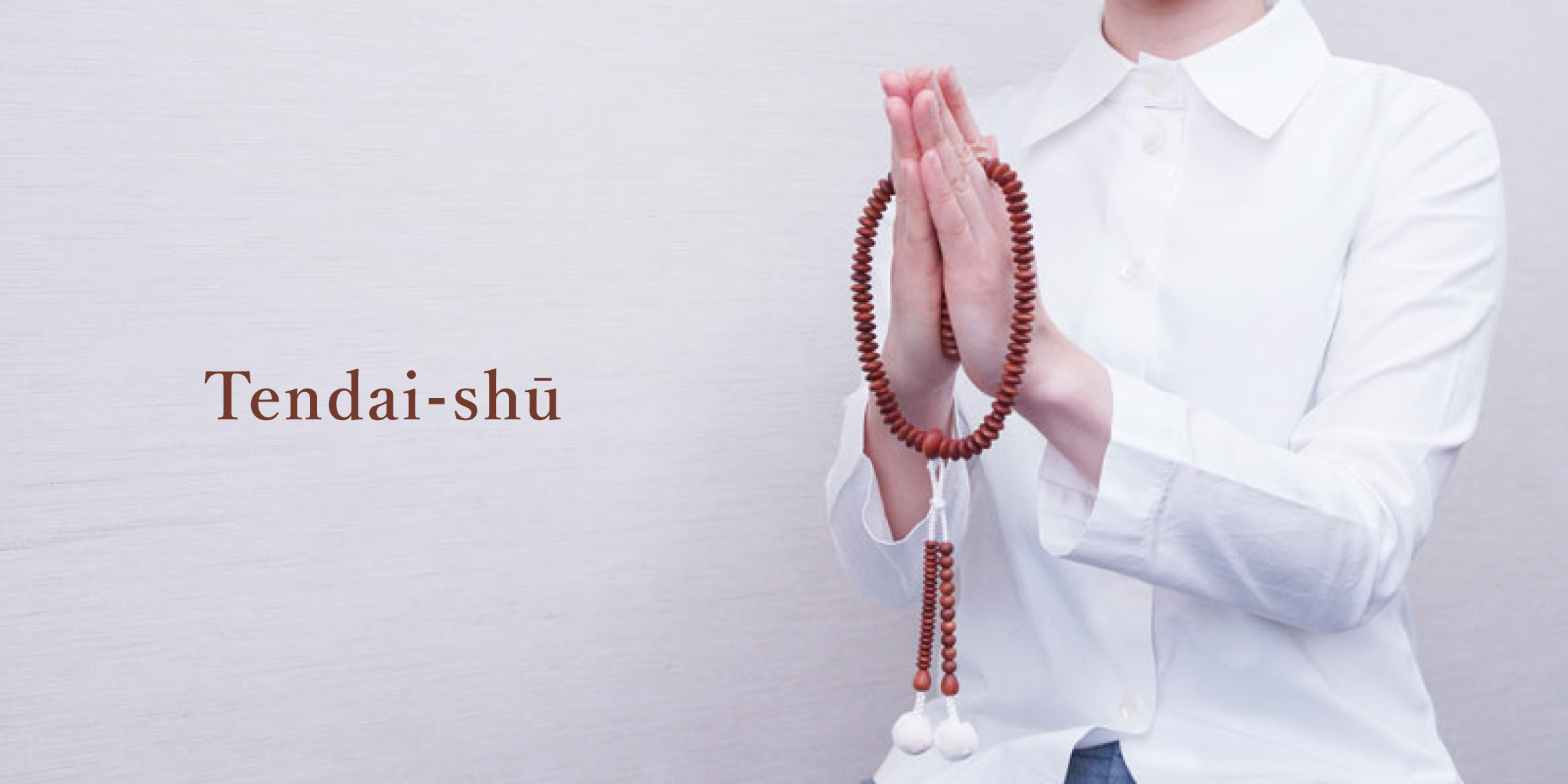
The Juzu of the Tendai-shū are not made with round beads but with flat beads, referred to as hira-dama (large flat and medium flat beads). Additionally, there is one Oya-dama and the tassel consists of two strands, each with a bon-ten.
The deshi-tama consist of one side with 10 round beads and the other side with 20 flat beads, forming a “tou-ni-jyuu” (ten, twenty).
Tendai malas traditionally do not include a jōmyō-dama but if a jōmyō-dama is required, please feel free to request it.
Shugen of Tendai, specifically the Shougonin-ha attaches a jōmyō-dama, and when combined with the disciple beads, the total number of beads becomes 21.
This style of mala is widely used in the practices of Tendai monks.
Note: The way to handle the mala is just one example; other methods are also available.
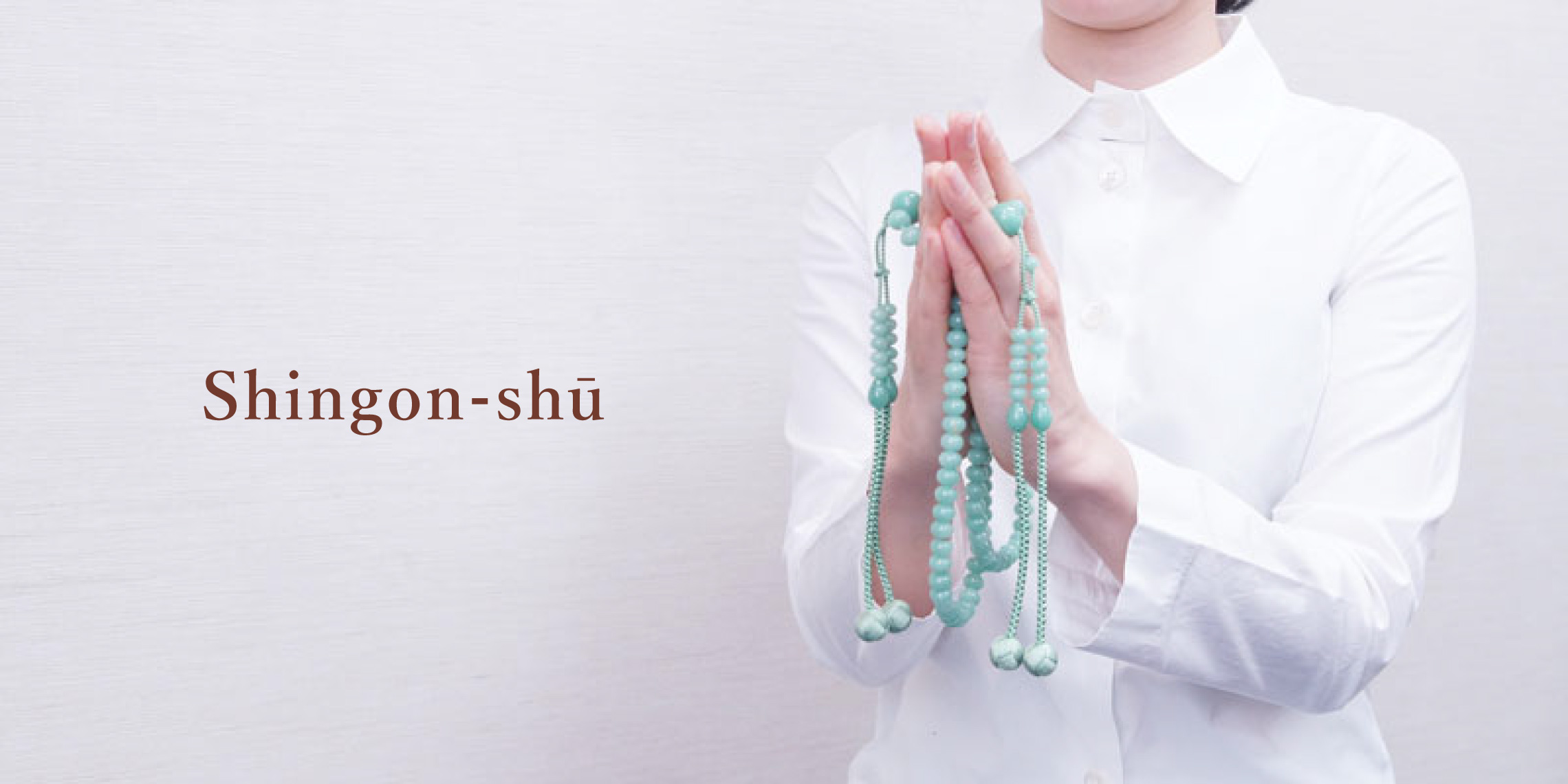
The Juzu of the Shingon-shū have a Oya-dama on both sides, and the main strand consists of 108 beads.
Each tassel has ten smaller beads, known as kiko-dama (or deshi-dama). This style of Juzu is said to be based on the crystal beads brought back by Kōbō Daishi from China.
In modern Juzu, one side of the tassels also includes jōmyō-dama.
The basic form of Shingon Juzu is called "furiwake-juzu" and is used not only in the Shingon but also in other Buddhist traditions.
Note: The way the beads are handled is just one example, and there are other ways to use them as well.
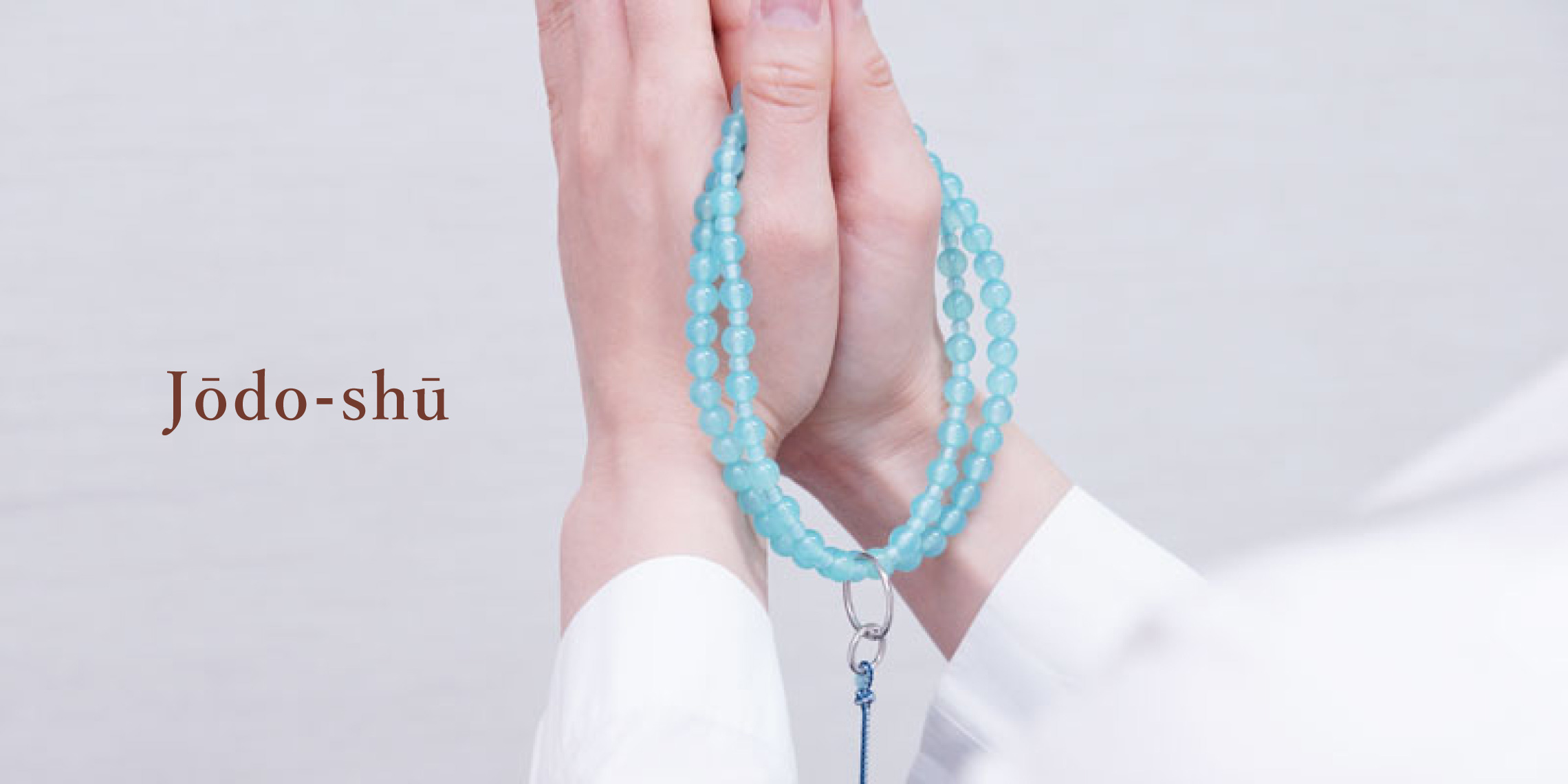
TThe Juzu of the Jōdo-shū , which are used to chant the Nembutsu for rebirth, have their own unique design.
A disciple of Hōnen Shōnin, named Awa-no-Suke, used 108 beads to chant the Nembutsu fervently and would count the number of recitations by moving the disciple beads up and down.
However, since the string of the deshi-dama would often break, it is said that he began using two sets of 108 beads to count the Nembutsu, one in each hand.
One strand consists of 27 beads, while another has 20 or 40 beads. The deshi-dama include six round beads and ten flat beads.
The 27-bead strand allows for a pause in breathing, and chanting it 25 times allows for 30,000 recitations (referred to as "San-man-guri") or 60,000 recitations (referred to as "Roku-man-guri").
The term "San-man-guri" is said to originate from Shōnen Shōnin of Isshin-in (1513–1554), while "Roku-man-guri" comes from Ninchō Shōnin of Kagagaya (1645–1711).
Both Shōnen Shōnin and Ninchō Shōnin were Pure Land monks who encouraged chanting the Nembutsu, returning to the teachings of the founding master Hōnen.
The San-man-guri and Roku-man-guri are referred to as "Nikyo Nembutsu" (daily Nembutsu beads).
The 9-inch San-man Jōdo is recommended for male monks, while the 8-inch Roku-man Jōdo is recommended for nuns or women.
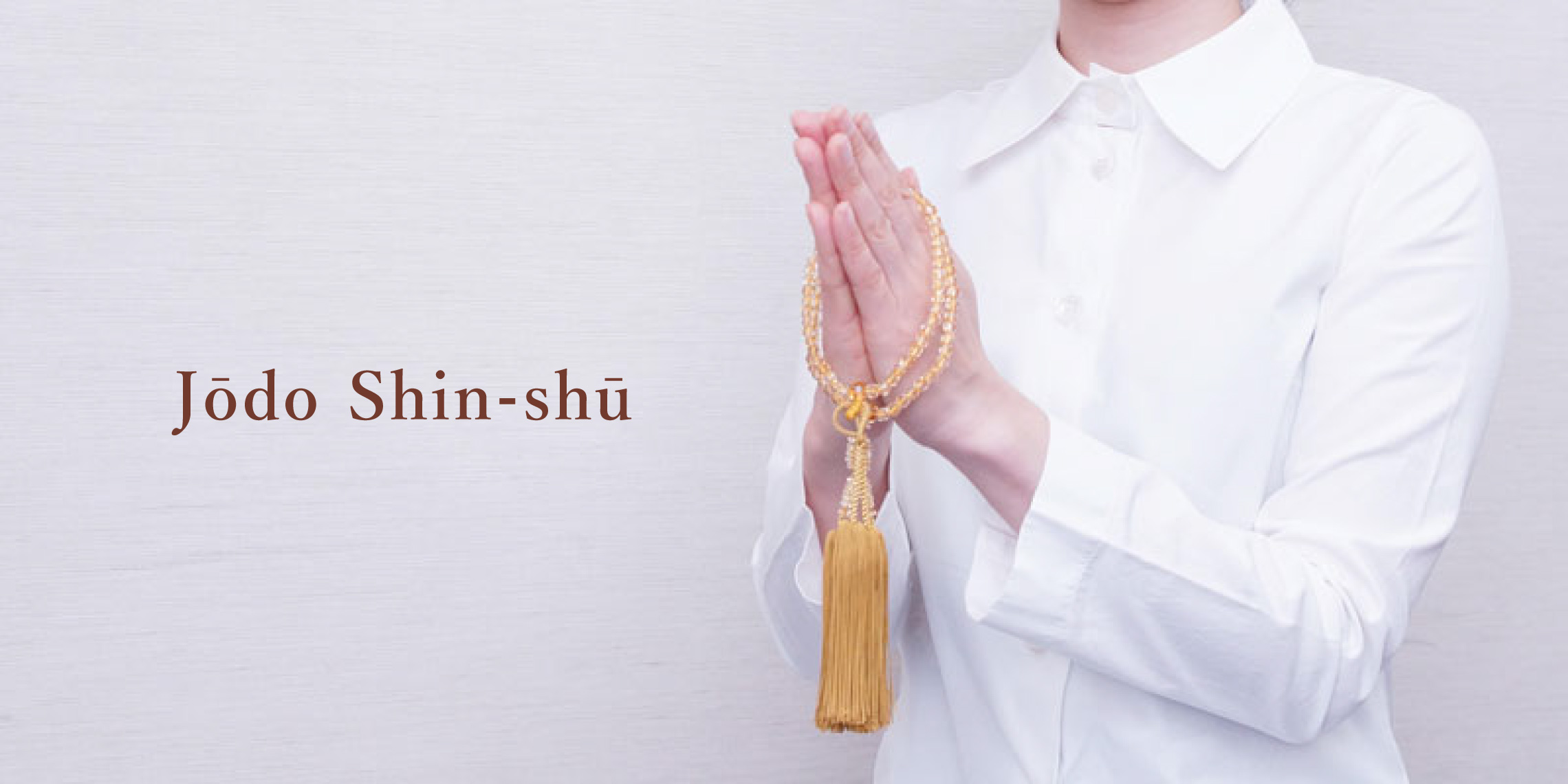
In the Juzu of Jōdo Shin-shū with 108 beads, one side of the Oya-dama is tied with a "Rennyō knot", and on the other side, 16 deshai-dama are gathered beneath the parent bead. Below these disciple beads, there is a tassel, but the disciple beads do not move.
This is because, in Jōdo Shin-shū, the number of Nembutsu recitations is not counted or emphasized as a teaching.
For general use, Juzu for men typically have a cord tassel, while women's Juzu traditionally feature matsu-busa. At Yamada Nenjudō, we offer our original Rennyō knot with Rennyō tassels (Miroku-style).
The Rennyō knot tassel has been adopted by Ryukoku University and is known as "Ryukoku Nembutsu." It has been well-received as the first abbreviated prayer bead design featuring the Rennyō knot.
NOTE: The way to handle the prayer beads is just one example, and there are other ways to use them as well.

The Juzu of Rinzai-shū do not feature deshi-dama. Deshi-dama are used in other traditions like Shingon-shū, Jodo-shū, and Nichiren-shū to count recitations of mantras, Nembutsu, or sutras, but since Rinzai-shū is focused on seated meditation (zazen), Deshi-dama are not included. The main beads between the Oya-dama and the Yon-ten consist of 7 beads and 14 beads.
For men, we recommend the original cord tassel or Amitabha tassel from Yamada Nenjudō, while for women, the Miroku tassel is recommended.
For the robes of clergy, disciple beads are included, but they cannot be moved, and the tassels are cut.
NOTE: The way to handle the prayer beads is just one example, and there are other ways to use them as well.
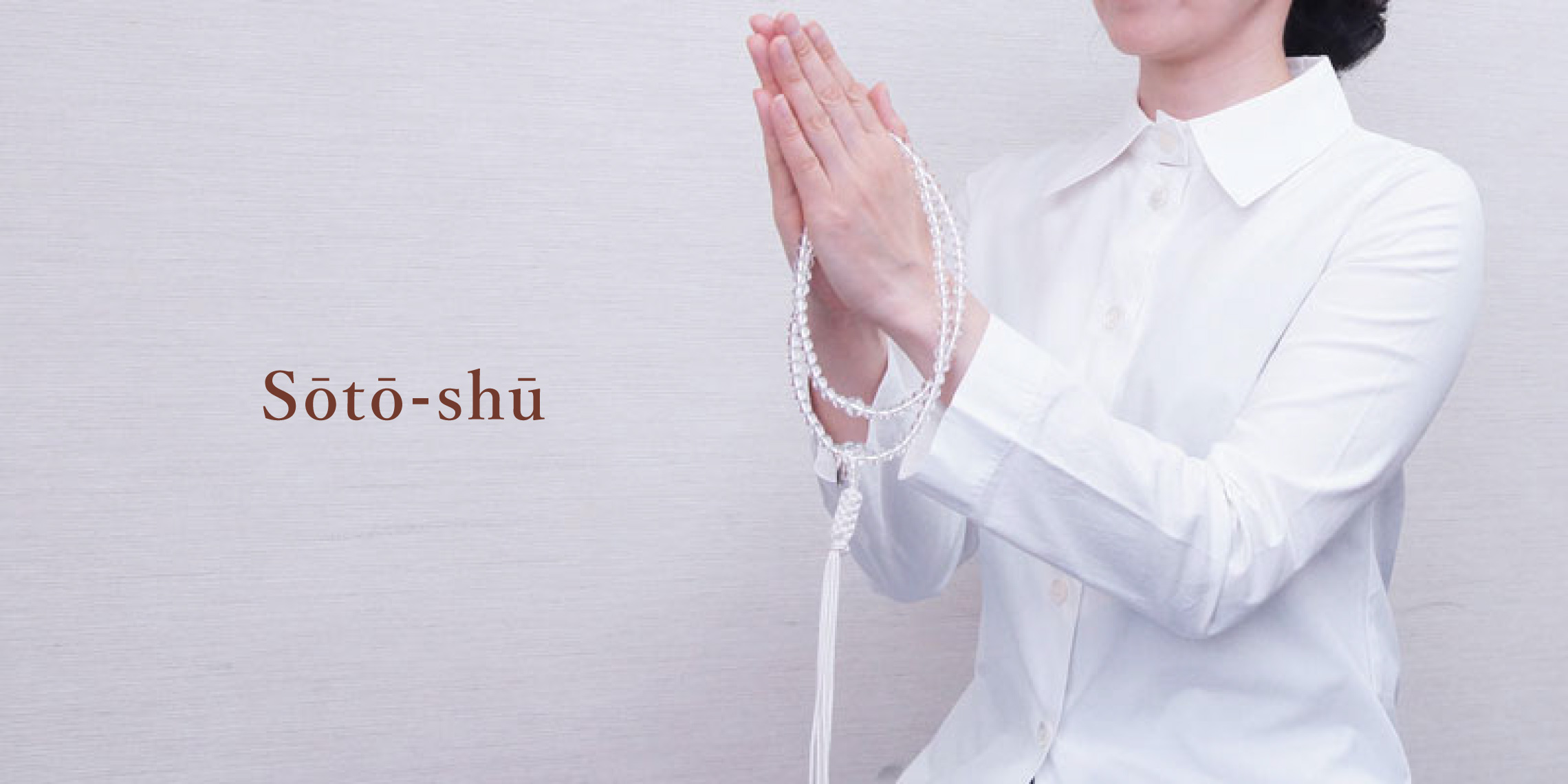
The Juzu of the Sōtō-shū do not have Deshi-dama, but a distinctive feature is that they include metal rings. Deshi-dama are used in other traditions like Shingon-shū, Jodo-shū, and Nichiren-shū to count recitations of mantras, Nembutsu, or sutras, but since the Sōtō-shu focuses on seated meditation (zazen), Deshai-dama are not included.
The main beads between the parent bead (which has a tassel) and the four directional beads consist of 18 beads and 18 beads.
For men, we recommend the original Amitabha tassel from Yamada Nenjudō, while for women, the Miroku tassel is recommended.
NOTE: The way to handle the prayer beads is just one example, and there are other ways to use them as well.
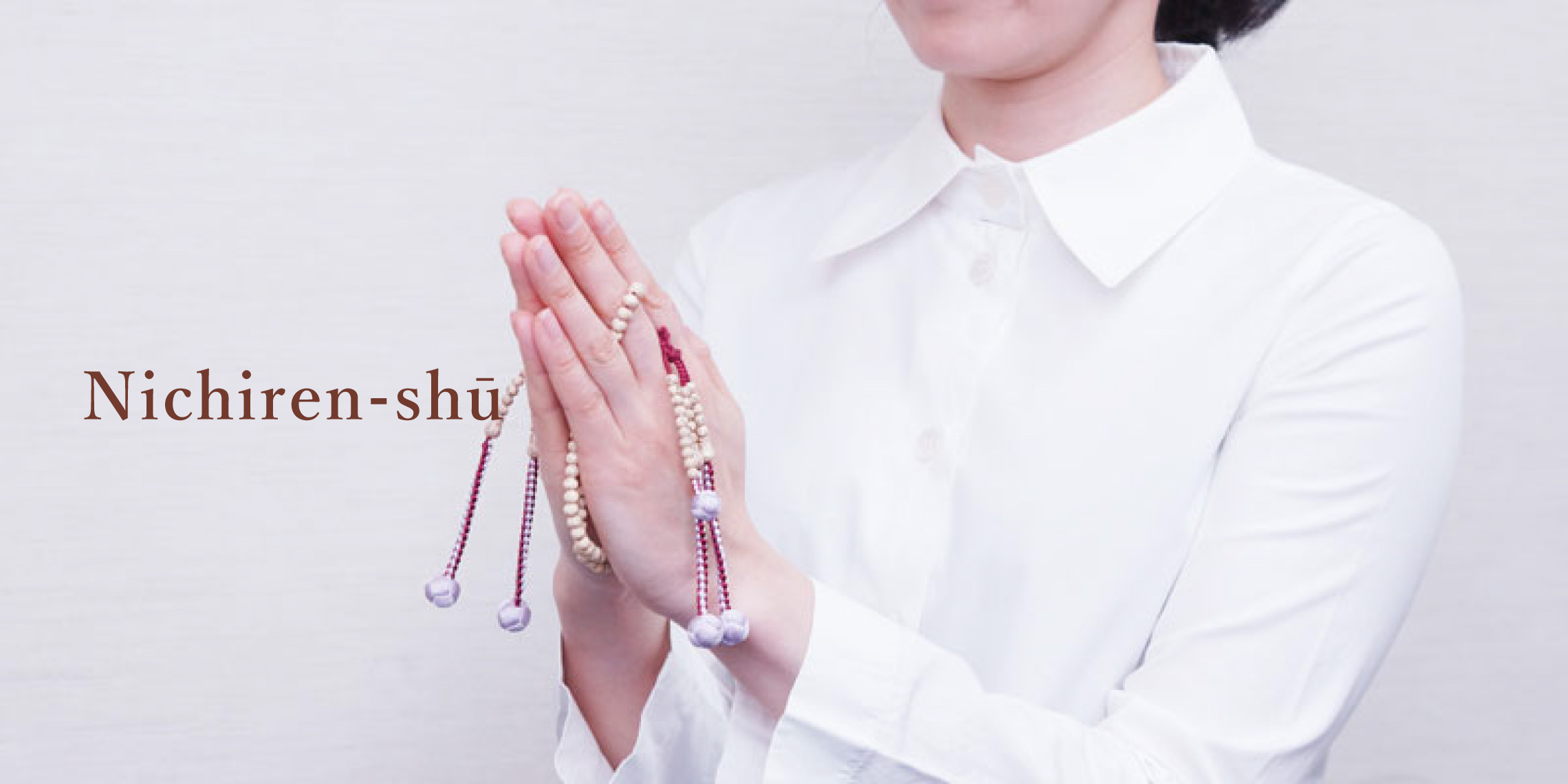
In the Nichiren-shū, it is generally recommended to use a set of 108 prayer beads. On one side of the Oya-dama, there are two strands, with a jōmyō-dama attached to one of them.
After the beads are tied, ten Deshi-dama are attached to each strand and secured with a tassel. On the other side, the two strands extending from the second Oya-dama each hold five Deshi-dama, also secured with a tassel. Another strand has ten disciple beads attached, and this strand is called the "counting strand" (sūtoru). It is also known as the kiko-dama strand, used for keeping track of the number of recitations of the Namu Myōhō Renge Kyō mantra. This strand does not have a tassel for securing the beads.
The small beads, known as shiten, are referred to as the "Four Bodhisattvas," symbolizing the bodhisattvas Jōgyō, Mūhen-gyō, Jōgyō, and Anryu-gyō.
The two parent beads symbolize the Eternal Shakyamuni Buddha and the Many Treasures Buddha.
NOTE: The way to handle the prayer beads is just one example, and there are other ways to use them as well.handle the prayer beads is just one example, and there are other ways to use them as well.
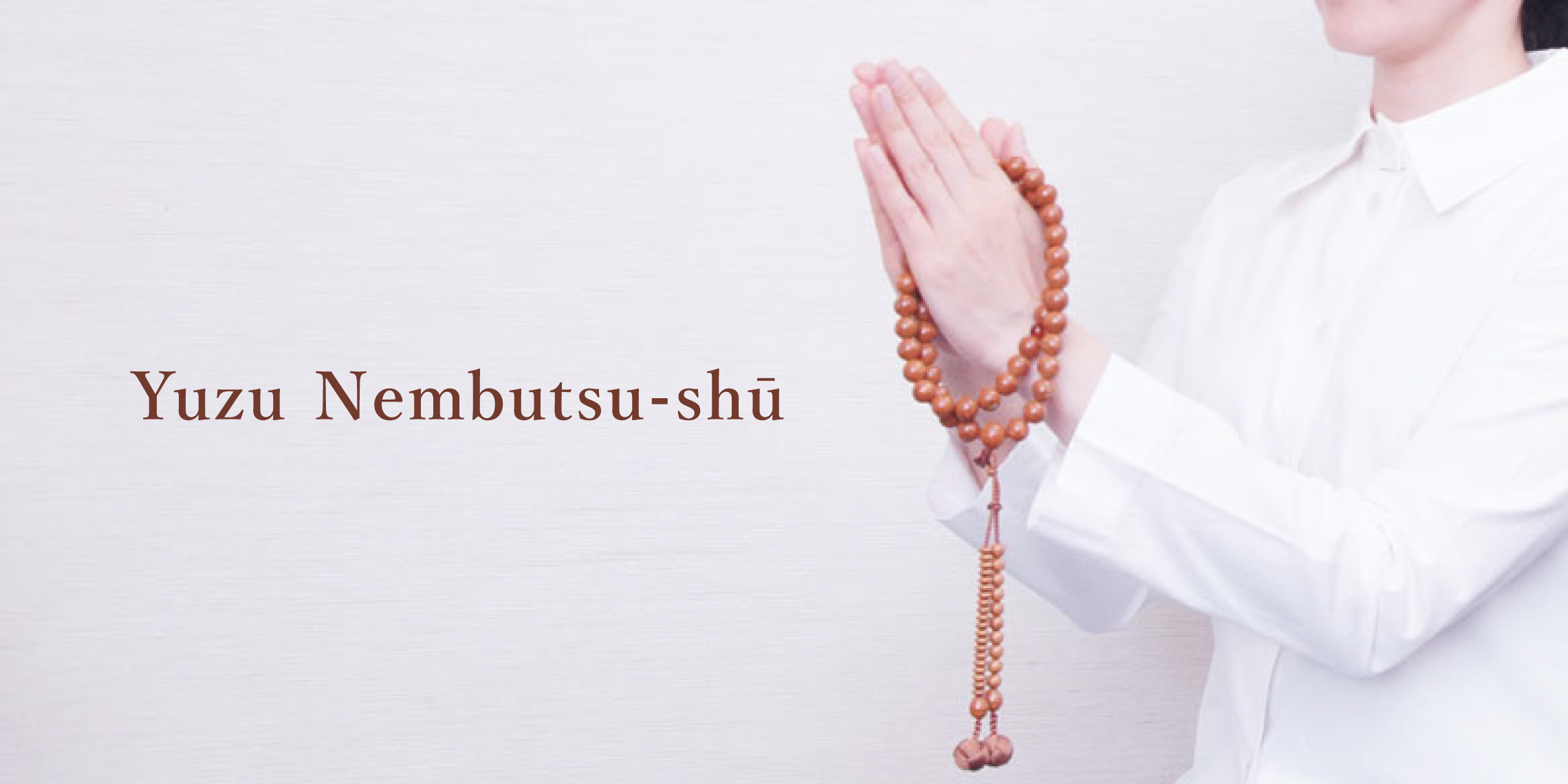
The Jūzū Nenbutsu-shū is founded by Ryōnin Shōnin, who is known from Jodo-shū. Also known for "Ichinin issai nin, issai nin ichinin, ichigyō issai gyō, issai gyō ichigyō"
This verse means that the merit of one person’s Nembutsu brings benefits to all people, the merit of all people’s Nembutsu is focused on one person, the practice of Nembutsu permeates all actions, and all actions are infused with the Nembutsu practice.The Jūzū of Yuzu Nenbutsu-shū were established by Dōtsū Shōnin (1649–1716), who revived the sect.
The beads consist of one Oya-dama, 54 main beads, and 10 flat beads and 10 round Deshi-dama on each of the two strands.
This style of Juzu, with 54 main beads and 10 flat and 10 round Deshi-dama on each side, is also known as "Hankuri Juzu" or "Katakuri Juzu," and can be used in Shingon and other sects as well.
The size of the beads may vary depending on the bead size, and the dimensions are not listed, so please inquire for details.
NOTE: The way to handle the prayer beads is just one example, and there are other ways to use them as well.
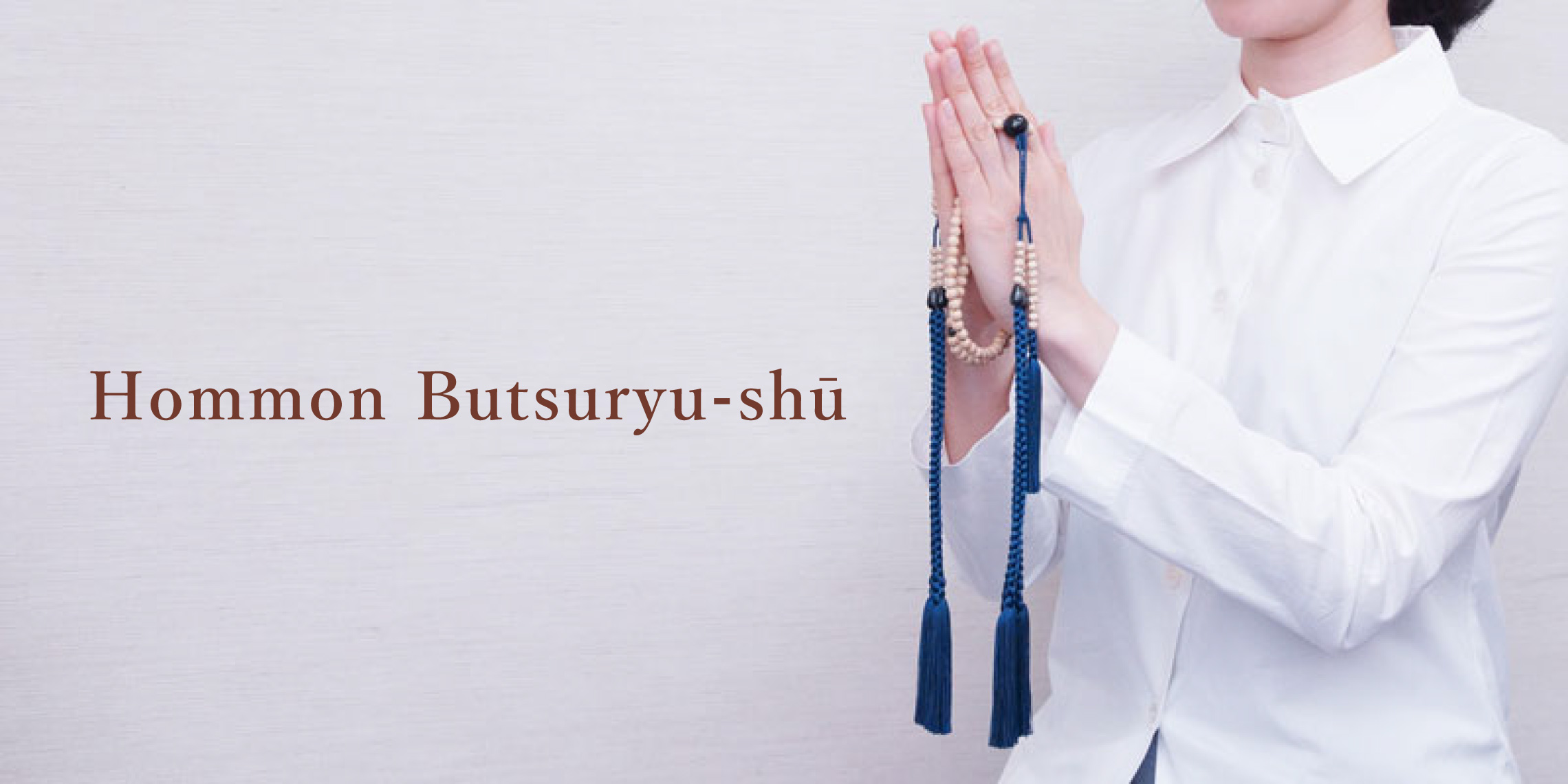
Honmon Butsuryū-shū is founded by Nissen Shōnin (also known as Chōmatsu Seifu, 1717–1890), with Nichiren as its founder.
As the name "Honmon" suggests, this sect places emphasis on the latter part of the "Hokke-kyo" Sutra, known as the "Honmon" section. "Butsuryū" means a sect established by the teachings of Shakyamuni Buddha.
The Juzu of Honmon Butsuryū-shū are characterized by their long tassels (strands). The prototype of these Juzu follows those used by the founder, Kaidō Shōnin (Nissen Shōnin), and features cut tassels.
The beads consist of two Oya-dama, with one strand featuring jōmyō-dama and 20 Deshi-dama that cannot be moved.
The other side is divided into three strands: two strands each contain five Deshi-dama beads, secured with a tassel, and one strand contains ten Deshai-dama without a tassel.
NOTE: The way to handle the prayer beads is just one example, and there are other ways to use them as well.
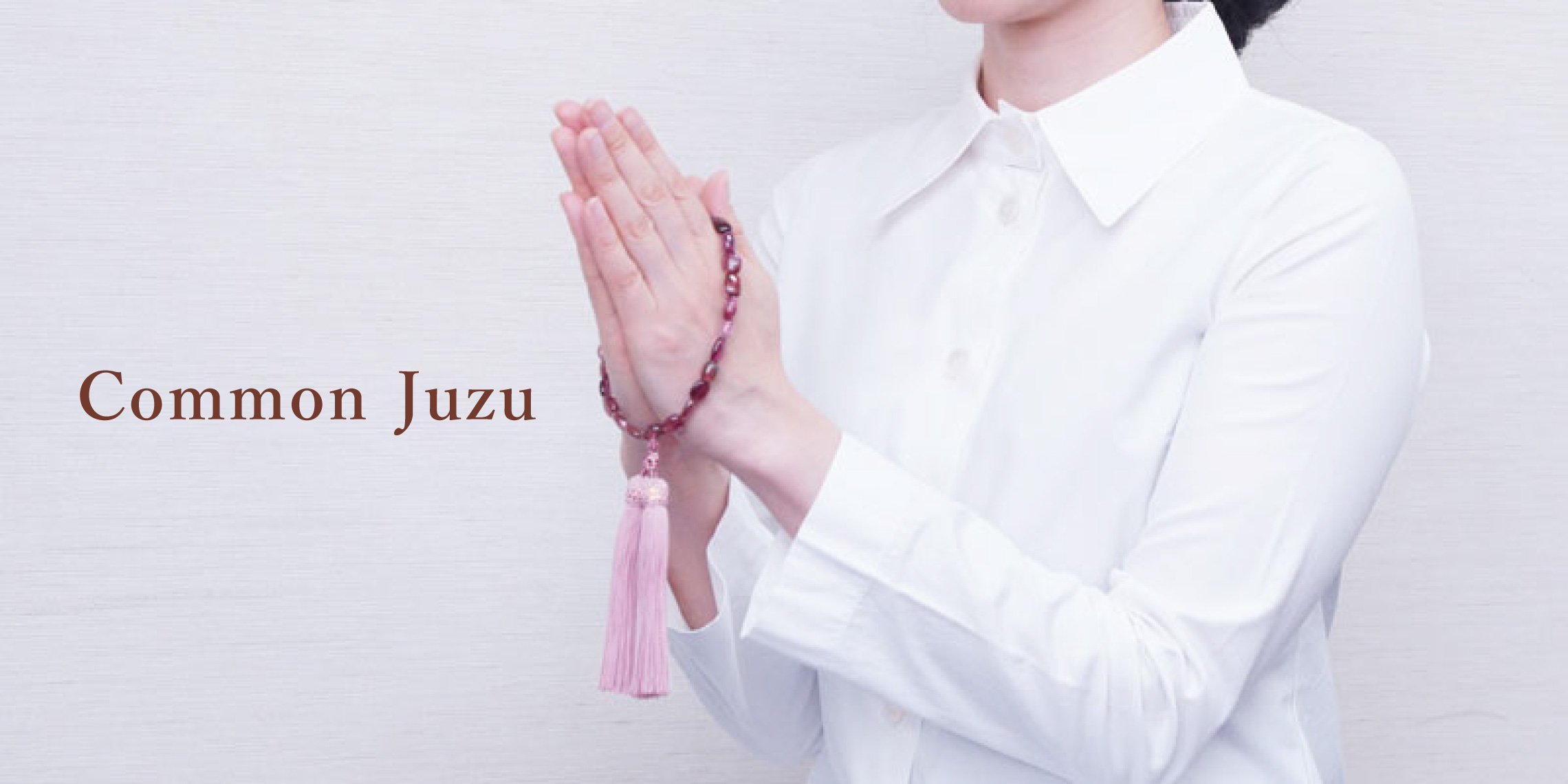
These Juzu can be used across all Buddhist sects.
